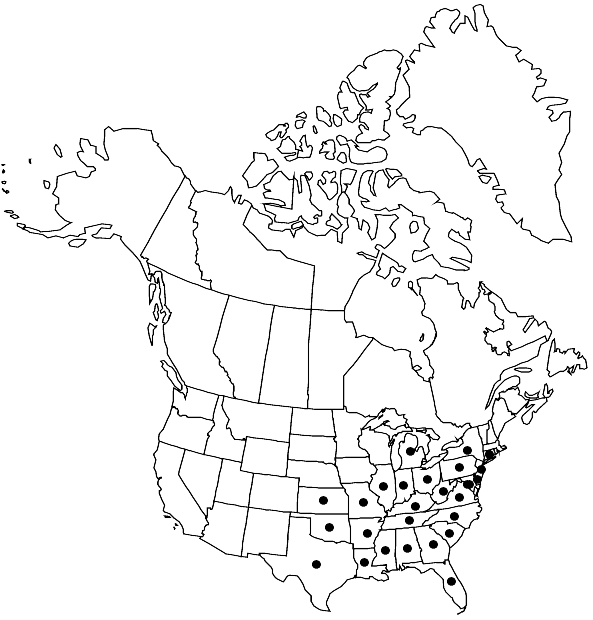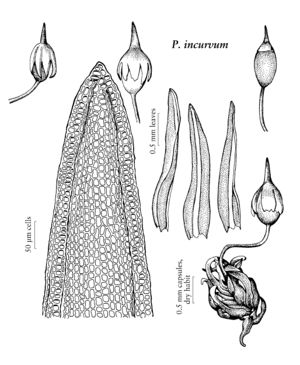Ptychomitrium incurvum
Ann. Mag. Nat. Hist., ser. 2, 3: 487. 1849,.
Plants small, cespitose, glossy, dark green. Stems erect, to 0.5 cm. Leaves crispate when dry, oblong-lanceolate, 2 mm; margins entire distally, erect proximally; apex cucullate to subcucullate. Specialized asexual reproduction rare, short-uniseriate or branched gemmae, several cells long, on branched axillary filaments. Seta 1 per perichaetium, 2–3 mm. Capsule ovoid, 0.75–1 mm, smooth or wrinkled when dry; peristome teeth perforate but mostly not divided, densely papillose. Calyptra lobes about one third length of calyptra.
Phenology: Capsules mature Sep–Jun.
Habitat: Acidic and calcareous rocks, soil, very rarely tree bark, open forests
Elevation: low to moderate elevations (0-1400 m)
Distribution

Ala., Ark., Conn., Del., D.C., Fla., Ga., Ill., Ind., Kans., Ky., La., Md., Mich., Miss., Mo., N.J., N.Y., N.C., Ohio, Okla., Pa., S.C., Tenn., Tex., Va., W.Va., South America (Ecuador), Europe.
Discussion
The small dark green plants of Ptychomitrium incurvum are unmistakable growing on rock, with their glossy leaves tightly crispate when dry. The leaves are shorter than in P. sinense and are straight when wet, not somewhat falcate at the tips as is common in P. sinense. Sporophytes are very common in this moss and the old sporophytes persist for a long time. Sterile colonies of P. incurvum can be very reminiscent of Weissia controversa, but Ptychomitrium is more glossy; its leaves have smooth cells and without the strongly involute margins of Weissia.
Selected References
None.
